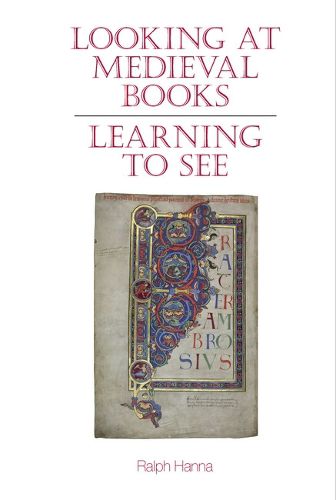Readings Newsletter
Become a Readings Member to make your shopping experience even easier.
Sign in or sign up for free!
You’re not far away from qualifying for FREE standard shipping within Australia
You’ve qualified for FREE standard shipping within Australia
The cart is loading…






Unlike books familiar to us from print culture, every medieval book is unique, the product of individual circumstances of planning, execution, and history. This is a fundamental difficulty for study, particularly for those beginning the investigation of texts in manuscript. There are two conventional ways of approaching this difficulty: explaining the series of processes by which a manuscript book is constructed and explaining how to construct a professional description of a manuscript book. Neither addresses a problem fundamental for beginners: what happens when a librarian presents you with a manuscript? How should you proceed? Fundamentally, this is a problem of visual examination, and taking its procedure from the grand M. R. James and M. B. Parkes, this book attempts to stimulate the visual and experiential. It attempts, in a heavily exemplified account, to explain what might be there in a manuscript to perceive and what it might mean. The argument follows a process of examination that begins with the physical bulk of what's in front of you (and its cover, or binding) and ends with traces of the book's history.
$9.00 standard shipping within Australia
FREE standard shipping within Australia for orders over $100.00
Express & International shipping calculated at checkout
Unlike books familiar to us from print culture, every medieval book is unique, the product of individual circumstances of planning, execution, and history. This is a fundamental difficulty for study, particularly for those beginning the investigation of texts in manuscript. There are two conventional ways of approaching this difficulty: explaining the series of processes by which a manuscript book is constructed and explaining how to construct a professional description of a manuscript book. Neither addresses a problem fundamental for beginners: what happens when a librarian presents you with a manuscript? How should you proceed? Fundamentally, this is a problem of visual examination, and taking its procedure from the grand M. R. James and M. B. Parkes, this book attempts to stimulate the visual and experiential. It attempts, in a heavily exemplified account, to explain what might be there in a manuscript to perceive and what it might mean. The argument follows a process of examination that begins with the physical bulk of what's in front of you (and its cover, or binding) and ends with traces of the book's history.